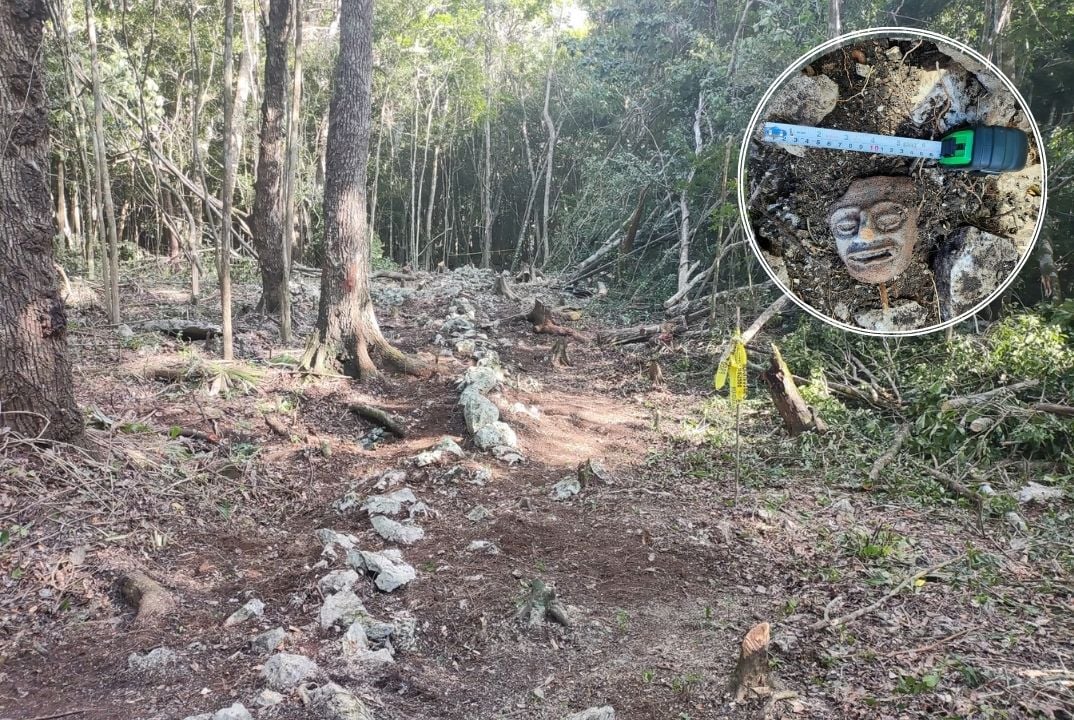Among the materials recovered in section 6 are bags with ceramic pieces and metates.
 Photo: INAH
Photo: INAH
Specialists from the National Institute of Anthropology and History (INAH) found 83 “Albarradas” (walls) in works of the Maya Train in Quintana Roo and – due to their characteristics – they believe that these could have been used to locate and delimit the areas, like a kind of “Google Maps” in pre-Columbian times.
Albarradas are limestone walls that commonly appear among pre-Hispanic vestiges, and since their construction is simple and effective, they are still used in contemporary rural architecture across the Yucatan Peninsula.

“The most accepted theory about their function in pre-Columbian enclosures is that served to delimit crop areas or even living spaces,” said the field manager of Front 1 of Section 6 of the Mayan Train, Fabián Gutiérrez Gómez, who pointed out that the findings They occurred in the vicinity of the municipality of Chumpón.
The expert reported that during the survey of the aforementioned branch, which goes from Tulum to Chetumal, in Quintana Roo, carried out from September 2022 to mid-March 2023, 205 monuments of archaeological origin were found, which include two terraces, two wells , 53 foundations and 83 Albarradas.
The Google Maps of the time
“These last elements, date from the Classic Maya period (300 to 600 AD) and have varied dimensions, which range from five to 400 meters in length, with one meter wide and 70 centimeters high, on average,” the expert explained.

“The novelty of these structures lies in their design, which is distinguished from other Albarradas by their location, close to bodies of water in some cases, and their irregular appearance in the shape of an “L” as they are normally linear structures”, the archaeologist pointed out.
“These characteristics have allowed us to formulate the hypothesis that, in this specific case, perhaps, they were used as a type of pre-Hispanic ‘Google Maps’, which allowed the inhabitants to locate themselves in the region.”

“Some of these walls were also found near foundations, so it is necessary to analyze the archeology of the landscape to determine if, in fact, their location corresponds to marks on the ground that would serve as signage for the inhabitants of the place, and not to delimitations of family plots, with which they are frequently associated”, he continued.
Gutiérrez Gómez stated that another aspect to highlight is that almost no archaeological material was found near the Albarradas, which could indicate that they were not settlements, or that the social organization was communal and most of the activities were carried out outdoors.

The analysis of the 83 Albarradas will reveal important details about the way of life of the ancient settlers, for example, the use they gave to the space and the structures themselves, as well as the activities they carried out on a regional scale.
Gutiérrez Gómez explained that in the excavation phase, which began in January 2023 and continues to date in the aforementioned work front of the construction work, 218 bags of ceramics and three metates, as well as two flint knives, have been recovered, among other archaeological materials, which will be studied in depth to know their age, ethnic affiliation and the material from which they are composed.

The Federal Ministry of Culture, through the National Institute of Anthropology and History (INAH), reiterated that it will continue the conservation, restoration, and preservation work of the pre-Hispanic monuments and materials found on the Maya Train route.

TYT Newsroom



